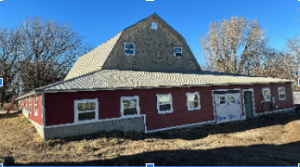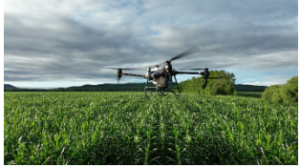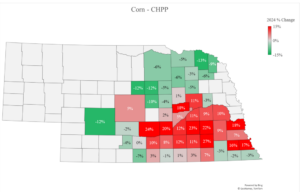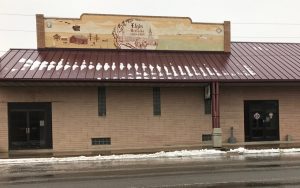Video Transcript:
Three hundred bushel corn and 70 bushel beans. The beans are on the back page, okay. And this was a no rent. This is just your inputs. So you can go across there and you can put your own cost in there. I did this and I’ve been passing these out.
Fertilizer, you can see the nitrogen’s $250. Right now. It’s from 75 cents to a dollar a pound for nitrogen. Now, it is coming down. Two weeks ago, got a phone call, price of Urea come down. I said, “I’ll make a decision in the morning.” Next morning, was $140 done higher. That’s how volatile it is, this fertilizer. I think there will be supply. It all depends on how many beans are planted. If corn drops down to 90 million acres or below, I think there will be plenty of fertilizer. I still think there’d be plenty of fertilizer because the I – states (Iowa, Indian, Illinois) put a lot on last fall. A lot of stuff went on. Depends on what beans do. But right now fertilizer is double what you paid last year. And some, it might be even higher than that. So you see the cost here on corn. I got $972 an acre.
And beans I got 486. And so you can put your own cost in there. And everything far as chemicals. Cover your chemicals. Chemicals. First time I seen Roundup reminds me when I first got into business, we were paying them like $180 for Roundup. That was way back 40, 45 years ago.
Are you concerned with the availability on the chemical?
I think there is. I mean, Bayer just came out yesterday and said they’re not going to… There’s a supply issue with Bayer and which is that’s the old Monsanto and, in other words, they’ve not filled their contracts. We covered, I think I’m all right. I don’t know about anybody else. Roundup it came back down and now I think it’s going to go back up. You’re still talking $49, $50 a gallon for Roundup.
Last year it was $18. So that gives you an idea and I think there’ll be some shortage in the insecticides. Just depends on how soon you got something. But I would cover on chemicals and know right what you got.
Fertilizer. I think you can wait on fertilizer a little bit. I think that the urea will come down. I just think that if there is more beans… Like in 2008, there was 32% less fertilizer put on. That’s the last time fertilizer got this high. There was 32% less fertilizer put on in 2008. So there will be less fertilizer put on, but you also got the higher prices too. Commodity’s higher. But right now, I don’t seem to have any problem getting the fertilizer. Supply seems to be there, you’re just going to pay the price for it.
Potash is high. Right now you’re looking at urea, probably around $750. Potash somewhere around that $750, 10-34-0 $900, MAP $850.
Now there are some prices out there, some of the suppliers had some. I’m just talking about if you had to replace it right now. But this was, but this kind of gives you an idea of what I passed off to my farmers. One thing we’re doing a lot is I brought a soil probe. We’re going to try to… Let’s go back to some of this nitrogen, going to talk about a little bit too.
We are soil probing, trying to find out the residual nitrogen that’s in the soil right before you plant, see what you got. May not have to do every field, but you kind of know which fields, how you’ve been doing, how you’ve been putting your nitrogen. In my area, we got a lot of nitrate in the water and we pumped a lot of water. And so there would be quite a bit. And when you talk about nitrogen… I don’t know if you saw this in the Norfolk paper. This is in Norfolk paper the other night, and this is going to be a reason we are going to be doing some of this.
I got one. You got one of them too. Okay. But dangers of nitrate, highlighted. The NRD’s are going to really come down on us. They’ll regulate us. It’s going to happen because right now our NRD is going out and doing sampling. You know, they are coming. See them go out right now. They’re all out sampling all the ground. They are going to spot sample and see where they are at. But this is in the Norfolk paper. And so that is one reason why we are going to need to take a sample in the spring and find out what you got. And another big thing we are doing is we are tissue sampling. We are going to know what that crop needs. We are going to, we’re going to treat that crop like is feeding cattle. You are going to know where it’s at. And we are finding out that by taking soil samples in our irrigated ground versus the dry land corner, we got half them micronutrients in the irrigator. Half.
We are sucking the micronutrients out of our fields because we’re producing such high yields. And we’re going to have to really watch the micronutrients. And that’s why we’re putting a lot. But this tissue sampling.
And we’re going to try to get specifics on each quarter having the same hybrid so that we can know… Because, every hybrid is a little different far as nitrogen usage. Some of them will take more. And so we want to get very specific on… A lot of guys are trying to go out there and plant, they got four rows of this eight rows of this and I’m trying to discourage them from that. I want to see a quarter to have the same hybrid on so that we can tissue sample and know where we are at. And I’m going to pass these out here.
I haven’t got those yet. Pass them out. But this will give you kind of an idea. I printed this off and this is kind of what we used to far as tissue sampling.
I don’t know if you ever heard of the Level Farming, have you watched Level Farming? Level Farming is a group of guys at Hulu and there’s quite a few guys that are on that. They don’t talk too much about cause they signed a disclosure, but they are tissue sampling all the time. They got fields they are sampling every week. They want to know where that crop is at. And that is what we got to do because we’re going to… When they talked about that spoon feeding the crop… I mean all the farmers I got, we don’t put any nitrogen out early. All the farmers I work with, no early nitrogen. We put a height, we put a starter out there and then we start spoon feeding and we do not go out and put anything on our sand. We’ve gone away from that. I’ve done that the last 10 years and so we just spoon feed.
See what else I might be missing. This right here gives you an idea of when we want to tissue sample of this here. Just give you an idea of what it looks like. But as far as one thing is, a lot of guys are going to try to do this so we don’t have to put as much fertilizer out there.
I’ve loaded my farmers up, the last four or five years, on a lot of fertilizer. And now we’re going to try to see if where we are at, because we can go ahead and correct with some of this stuff, if we tissue sample. If you go in at a certain stage there, we know where we may come back in and correct that a little bit. So that’s what we’re doing.
But right now fertilizer’s high. You got to watch your input cost and you see what I passed out there. That’s $962. It’s going to be pretty slim profits. I’m trying to caution all my farmers. Right now everybody wants to go out and just put a whole bunch on. Well, we had good yields last year, but there is no guarantee for next year. I’ve seen it the other way. I come from the seventies and eighties. I saw too many put too much fertilizer on and go broke. So now it’s got to be real cautious. Any questions? Give you some food. Yeah.





